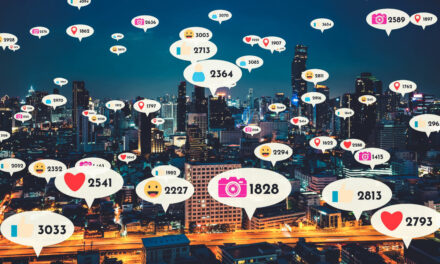Introduction
Have you ever wondered why some brands instantly resonate with you, while others leave you cold? The answer lies in the power of brand archetypes. A strong brand personality has the ability to create an emotional connection with customers, and understanding your brand’s archetype is key to achieving this. In this blog post, I will help you explore the concept of brand archetypes, identify your brand’s personality, and share insights on how to incorporate archetypes into your marketing strategy.
I. Understanding Brand Archetypes
Before we dive into the world of brand archetypes, let’s first define what an archetype is. An archetype is a universal symbol or recurring pattern in human psychology that evokes strong emotions and associations. Archetypes stem from the work of Swiss psychiatrist Carl Jung, who believed that these recurring patterns exist within our collective unconscious and shape our behavior and preferences.
Marketers have harnessed the power of archetypes by applying them to branding, helping businesses create a strong and memorable identity that resonates with their target audience. When a brand embodies an archetype, it taps into deep-seated human emotions and desires, creating a powerful connection with customers.
II. The 12 Brand Archetypes
There are 12 main brand archetypes, each with its distinct characteristics, values, and aspirations. Let’s explore each of these archetypes in detail.
1. The Innocent
- This archetype represents purity, simplicity, and goodness. Innocent brands often evoke nostalgia and make customers feel secure and protected. Examples include Coca-Cola, Dove, and Johnson & Johnson.
2. The Explorer
- Explorer brands are adventurous, daring, and independent. They inspire customers to break free from constraints and discover new experiences. Examples include Patagonia, Jeep, and The North Face.
3. The Sage
- The Sage archetype embodies wisdom, knowledge, and truth. These brands are often seen as thought leaders and experts in their fields, guiding customers to make informed decisions. Examples include Google, The New York Times, and National Geographic.
4. The Hero
- Hero brands are courageous, strong, and driven by a mission to make a difference. They aim to inspire and empower their customers, helping them overcome challenges and achieve their goals. Examples include Nike, SpaceX, and the American Red Cross.
5. The Outlaw
- Outlaw brands are rebellious, rule-breaking, and unapologetic. They challenge the status quo and empower customers to embrace their individuality. Examples include Harley-Davidson, Virgin, and Diesel.
6. The Magician
- Magician brands are transformative, imaginative, and visionary. They create a sense of wonder and awe in customers, often through innovation and cutting-edge technology. Examples include Apple, Tesla, and Disney.
7. The Regular Guy/Gal
- This archetype is down-to-earth, relatable, and approachable. Regular Guy/Gal brands focus on creating a sense of belonging and community among customers, often emphasizing simplicity and authenticity. Examples include Budweiser, IKEA, and Levi’s.
8. The Lover
- Lover brands are passionate, sensual, and romantic. They strive to create deep emotional connections with customers and make them feel cherished and desired. Examples include Victoria’s Secret, Godiva, and Tiffany & Co.
9. The Jester
- Jester brands are playful, humorous, and light-hearted. They bring joy and entertainment to customers, often using wit and satire to challenge conventions. Examples include Ben & Jerry’s, Old Spice, and The Onion.
10. The Caregiver
- Caregiver brands are nurturing, compassionate, and selfless. They focus on providing support and comfort to customers, often through exceptional service and empathy. Examples include Toms, Johnson & Johnson, and Whole Foods Market.
11. The Creator
- Creator brands are innovative, imaginative, and driven by a desire to create something meaningful and enduring. They inspire customers to unleash their creativity and realize their potential. Examples include Lego, Adobe, and Moleskine.
12. The Ruler
- Ruler brands are authoritative, powerful, and sophisticated. They provide customers with a sense of stability and control, often through high-quality products and impeccable service. Examples include Mercedes-Benz, Rolex, and IBM.
III. Identifying Your Brand’s Archetype
Now that you are familiar with the 12 brand archetypes, it’s time to identify your brand’s personality. Here are four steps to help you determine your brand archetype:
1. Assessing brand values and mission
- Begin by reflecting on your brand’s core values and mission statement. What is the driving force behind your business? What do you want to achieve? How do you want to be perceived by customers? This introspection will help you understand which archetype aligns best with your brand’s essence.
2. Analyzing target audience
- Understanding your target audience is crucial in identifying your brand archetype. Consider the demographics, psychographics, and desires of your ideal customers. Which archetype would resonate most with their values and aspirations?
3. Recognizing brand attributes
- Make a list of your brand’s key attributes, such as your tone of voice, visual identity, and customer experience. Analyze these elements and determine which archetype they most closely resemble.
4. Aligning with an archetype
- Based on your brand values, target audience, and attributes, select the archetype that best embodies your brand’s personality. Remember that while some brands may have elements of multiple archetypes, it’s essential to focus on one primary archetype to create a cohesive and consistent brand identity.
IV. Incorporating Brand Archetypes into Marketing Strategy
Once you have identified your brand’s archetype, it’s time to incorporate it into your marketing strategy. Here are some ways to do this:
1. Logo design
- Your logo is often the first visual element that customers associate with your brand. Ensure that it reflects the essence of your archetype, from color choice to font and iconography.
2. Brand voice and tone
- Your brand’s voice and tone should embody the characteristics of your archetype. For example, if your brand is a Sage, adopt a knowledgeable and authoritative tone in your communication. If your brand is a Jester, opt for a playful and humorous tone.
3. Imagery and visuals
- The images and visuals you use in your marketing materials should align with your archetype’s characteristics. Consider the colors, symbols, and style that best represent your brand’s personality and evoke the desired emotions in your audience.
4. Creating an emotional connection with the audience
- A strong emotional connection is crucial for brand loyalty and customer retention. Use your archetype to craft stories, campaigns, and experiences that resonate with your target audience and reinforce your brand’s identity.
5. Developing a consistent brand narrative
- Consistency is key when it comes to building a strong brand identity. Ensure that your archetype is present across all touchpoints, from your website and social media to packaging and customer service.
6. Adapting marketing tactics based on archetype
- Your archetype can also inform your marketing tactics. For example, a Hero brand may focus on content that highlights customer success stories, while a Caregiver brand might prioritize customer testimonials and community engagement.
V. Potential Pitfalls and Missteps
While incorporating brand archetypes into your marketing strategy can be highly beneficial, it’s essential to be aware of potential pitfalls and missteps:
1. Overgeneralizing or stereotyping your brand
- Avoid reducing your brand to a one-dimensional caricature of its archetype. Embrace the nuances of your brand’s personality and strive for a well-rounded, authentic representation.
2. Losing sight of the brand’s core values
- While aligning with a specific archetype can help strengthen your brand identity, it’s crucial not to lose sight of your brand’s core values and mission. Ensure that your archetype complements and enhances your brand’s essence, rather than overshadowing it.
3. Relying too heavily on the archetype without innovation
- It’s important to remember that your brand’s archetype should serve as a foundation for your marketing strategy, rather than a strict set of rules. Be open to innovation and adapt your strategy as needed, while staying true to your brand’s personality.
4. Addressing potential negative aspects of the archetype
- Each archetype has its potential negative aspects or pitfalls. Be aware of these and take steps to address them in your branding and marketing efforts. For example, an Outlaw brand should be careful not to cross the line into offensive territory, while a Ruler brand should avoid coming across as arrogant or elitist.
Conclusion
Embracing the power of brand archetypes is an effective way to create a strong and memorable brand personality that resonates with your target audience. By identifying your brand’s archetype and incorporating it into your marketing strategy, you can forge deep emotional connections with your customers and build a loyal following.
Remember, the key to success lies in understanding the nuances of your brand’s personality and staying true to its core values while leveraging the unique characteristics of your chosen archetype. So go ahead and discover your brand’s personality, and unlock the potential of brand archetypes to supercharge your marketing efforts.











